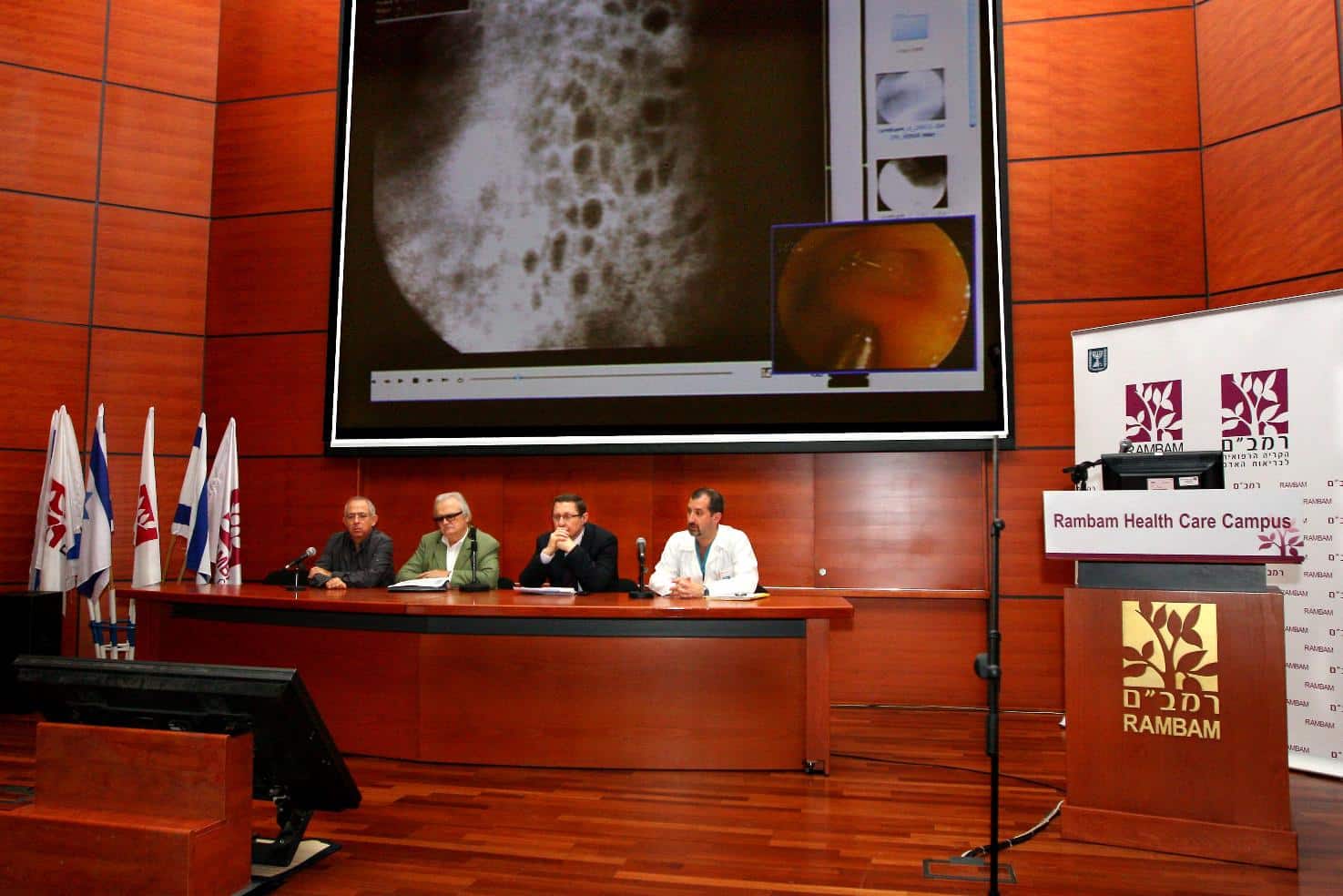When they invented the imaging pill, they didn't think that one day they would use it to broadcast to a hall full of doctors. A conference dealing with invasive endoscopy was held last week at Rambam, during which all the innovations that allow doctors to get even deeper into things were presented

A message from Rambam Hospital
A few years ago, the imaging pill led to an endoscopic revolution when it allowed medicine to reach places that could not be examined before. A few years later, medicine continues to conquer more and more goals and expand the ways of access to the depths of the body.
A conference in the field of invasive endoscopy, with the participation of renowned experts from Israel and Europe, was held last week at Rambam. During the conference, which lasted two days, the various experts lectured and presented new treatment methods, with their lectures accompanied by live broadcasts, from the bodies of the patients who were at the same time in the treatment rooms of the Rambam X-ray Institute. During the conference, two new medical procedures were performed for the first time in Israel, presenting the latest developments in the field of invasive endoscopy.
One of the new techniques is the use of an optical fiber a few millimeters in size, which allows access to the stomach and intestine (through a standard endoscope), but also to the bile ducts and the pancreas, areas to which access is quite limited. With this method, the cells can be seen at a magnification of up to 1,000 times. This development overcomes the limitations of similar devices on the market, which allow access up to the stomach area only.
Another new treatment presented at the conference focused on the treatment of reflux (gastric and esophageal reflux). In these patients, the lower esophageal sphincter does not function fully and because of this, it is possible for the contents of the stomach to pass, partially or completely, back into the esophagus. The prevailing treatment of the disease focuses mainly on medication and changes in diet and lifestyle. Sometimes it is customary to repair the valve through laparoscopic surgery (guided by a camera, through small incisions). At the Rambam conference, endoscopic surgery was performed to treat the problem, that is, inserting the endoscope all the way to the valve and performing the repair from inside the patient's body.
Another treatment presented at the conference is endoscopic surgery of Zenker's diverticulum
(Zenker Diverticule). This is a "pocket" that develops in the upper part of the esophagus, especially in older people, and causes difficulty in swallowing, coughing and bad breath, due to the accumulation of food inside it. Since there is no drug treatment for the problem, it is customary to perform an operation performed by a thoracic surgeon or an AEG doctor, a large and complex operation. The endoscopic method is considered more elegant and easier. At the same time as the conference, the endoscopic surgery was performed on two patients, in less than half an hour! Within a few days, the results of the successfully completed surgeries were visible.
Since 1988, many doctors from Israel and abroad, experts in the field, have gathered at Rambam to discuss and share therapeutic innovations, new approaches and contribute from their experience. According to Dr. Alan Suisa, director of the invasive gastroenterology unit at Rambam, and one of the organizers of the conference, since the tradition began at Rambam, medicine has come a long way: "Innovations allow us to improve the treatment of patients and reach places that were previously a mystery. I'm intrigued to see where else we can go."

One response
revolution!